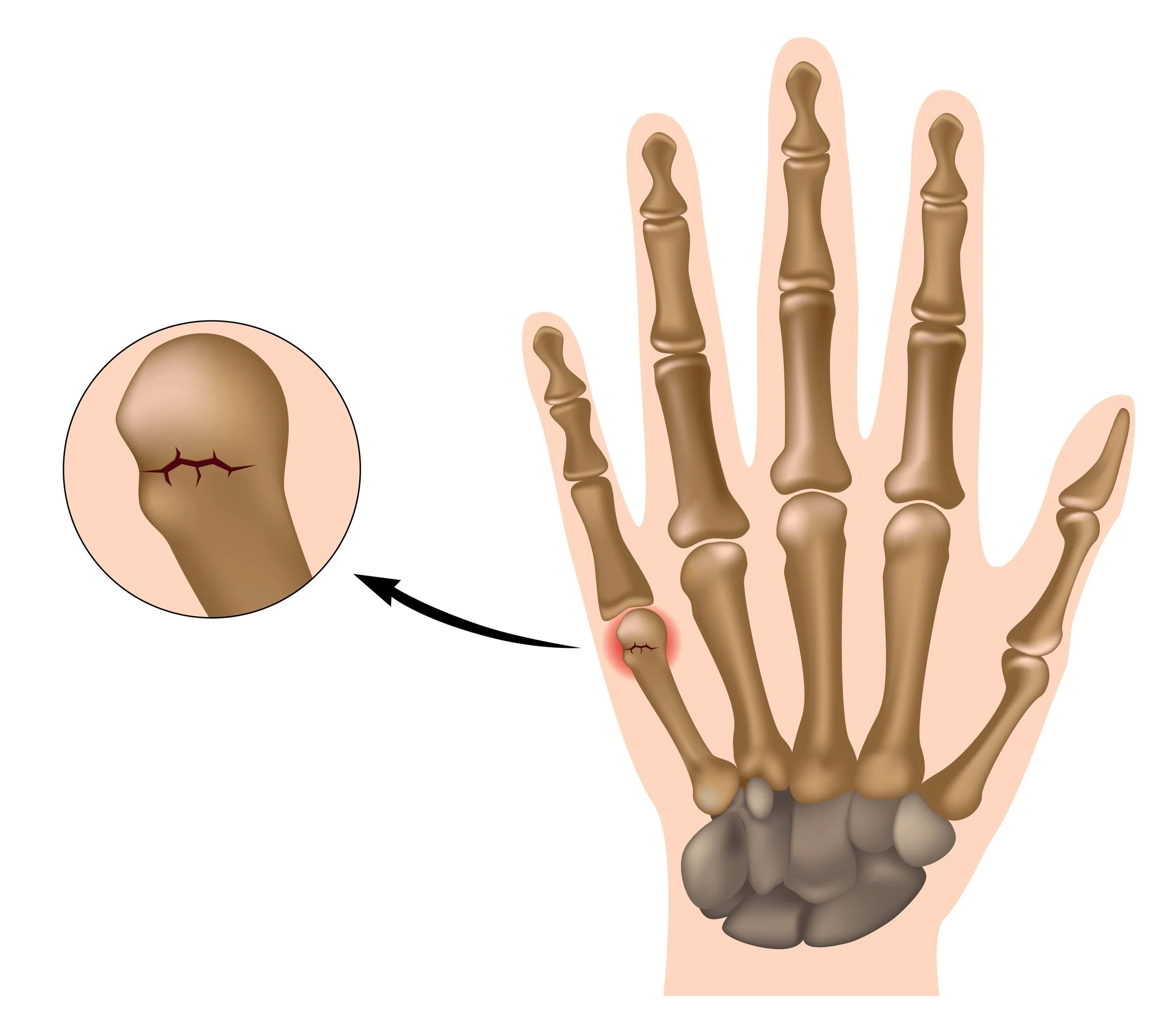Hand fractures
What are hand fractures?
A hand fracture is when one or many of the bones in the hand breaks. This includes the small bones of the finger or thumb, known as phalanges, as well as the long bones in the palm, known as metacarpals. One common hand fracture is known as ‘Boxer’s fracture’, which is when there is a break of a 4th and/or 5th metacarpal bone.
A broken hand is typically caused by a fall, crush injury, twisting injury, or through direct contact in sports.
How do I know if my hand is fractured?
There is usually pain and swelling/bruising around the injured area after a fracture has occurred. Depending on the type of fracture the pain may worsen when you grip, squeeze or move your hand, or you may have limited movement of your hand or finger. There may also be numbness in your hand or finger. In some cases, it is also possible that your hand or finger may physically look abnormal (eg. the finger is crooked or deviated).
How Ben can help?
Diagnosing hand fractures
Bones can break in several ways - straight across the bone, in a spiral pattern, into several pieces, or completely shattered- so it is important for you to tell Ben exactly what happened so he can ascertain not only which bones may have broken, but how they have broken. He will use two methods to diagnose your fracture:
Physical Examination: Ben will ask to see how your fingers line up when you extend your hand or make a fist. He will be looking to see if any fingers overlap/scissor with their neighbour or if any finger is angling abnormally. He may also apply gentle pressure to your injured area to assess the tenderness or discomfort you are feeling.
Imaging tests: Ben will most likely order X-rays, and in some cases, CT scans, to better understand the fracture and how it should be treated.
Treating hand fractures
Non-surgical treatment
For fractures that are lined up properly, Ben generally recommends a splint that will hold the injured bone in place until it heals. Ben will advise you how long you will need to wear the splint, but it is usually ~6 weeks.
It is common for the fracture to be stiff after it heals, due to the lack of use. As such, Ben will usually refer you to a hand therapist to improve your range of motion.
Surgical treatment
Ben will recommend surgery if the bones need to be re-aligned or the type or severity of fracture requires the bones to be supported while they heal. Fractures that involve any of your finger joints are particularly worrisome because if not treated correctly, will likely cause arthritis or substantial finger disfunction later in life. As such, surgery is very often the best course of action.
He will typically use small pins, screws, plates or wires to hold the fractured bones together. Sometimes these devices will stay on or in your bone for life, but in other cases, they will need to be removed after the fracture heals.
For more catastrophic injuries where multiple structures (such as tendons, nerves and/or ligaments) are impacted, Ben may also use microsurgical techniques to reconnect these structures. This involves operating under intense magnification with a very steady hand.
The outcome for most hand fractures that are quickly and easily treated result in excellent function; however if treatment is delayed, or if the injury is complex, there is the chance that fingers remain stiff and/or function poorly. As such, it is critical to seek treatment as soon as possible if you suspect you have a hand fracture.
-
Ben operates at multiple hospitals across Melbourne’s bayside and peninsula region, including:
Linacre Private Hospital, Hampton
Peninsula Private Hospital, Langwarrin
The Bays Private Hospital, Mornington
He can discuss your preferences in person during your consultation.
-
Ben will see you for a post-operative appointment usually 2 weeks after your surgery. During this appointment he will asses your wound and check that healing and mobility is progressing as expected. There will be no cost for this appointment.
As well as this, Ben will usually refer you to a hand therapist, who focuses on rehabilitation after an injury, and will work with you to improve function of the affected area.
-
You can usually start driving again 4-6 weeks after the operation. However, every surgery is different, so Ben will provide individualised advice as part of the initial consultation.


